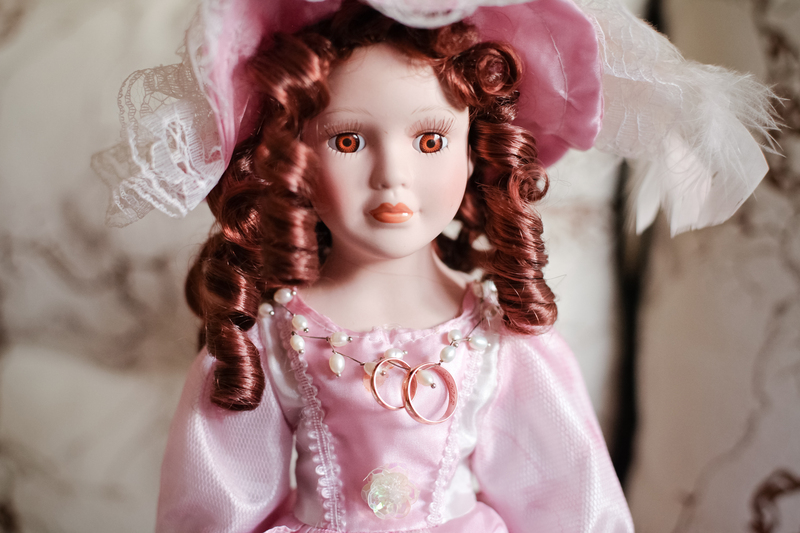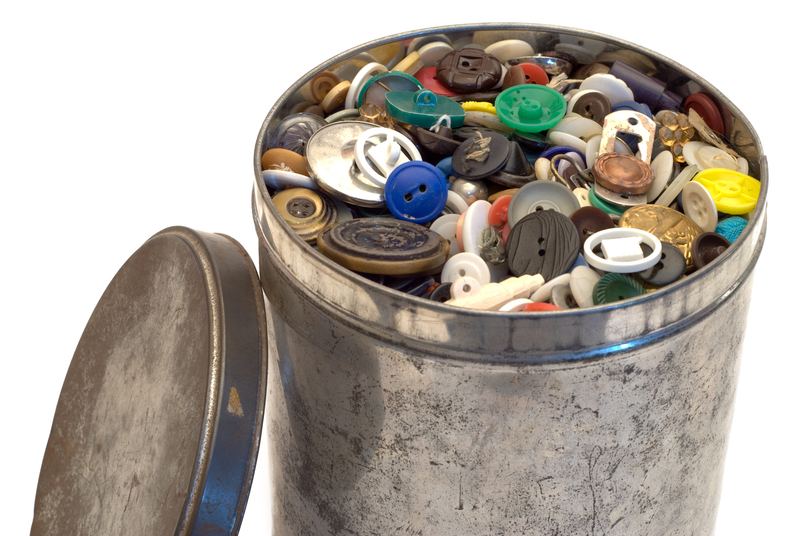Zero-Waste Lifestyle Starts Here: Bold Upcycling Projects for Beginners
Have you ever wondered how to cut down on waste and start living in a more sustainable, environmentally friendly way? Embracing a zero-waste lifestyle isn't just about ditching single-use plastics--it's about shifting your mindset and discovering creative ways to breathe new life into items you might otherwise throw away. For those just defining their eco-journey, upcycling projects offer a fun, satisfying, and impactful first step.
In this comprehensive guide, you'll learn exactly how to begin your zero-waste journey with bold and practical upcycling projects for beginners. Discover inspiring ideas, essential tips, and answers to common questions that will spark your creativity and guide you towards a greener, waste-free lifestyle.
What is a Zero-Waste Lifestyle?
A zero-waste lifestyle means aiming to reduce the amount of waste you generate to an absolute minimum--ideally, none at all! Instead of sending items straight to landfill, you focus on reusing, recycling, composting, and especially upcycling whenever possible.
But why is this important? Each year, billions of tons of waste end up in landfills, oceans, and natural habitats, polluting the planet and threatening ecosystems. By making small changes, such as adopting beginner upcycling projects at home, you can significantly reduce your carbon footprint and make a positive contribution towards sustainability.
- Environmental impact: Less waste in landfill means less pollution and resource depletion.
- Save money: Upcycling lets you create useful, beautiful items with what you already have!
- Personal creativity: Discover new ways to express yourself and learn practical new skills.

Getting Started: The Basics of Upcycling
Upcycling is the process of transforming unwanted or discarded materials into items of greater value or utility. Unlike simple recycling, which often downgrades materials, upcycling adds value and prevents waste at the source.
Why Upcycling is Key to a Zero-Waste Home
Upcycling bridges creativity with sustainability. By repurposing items--think old jars, worn t-shirts, pallets, furniture, or cardboard--you ensure their lifecycle is extended while reducing demand for new products. That's at the very heart of zero-waste living!
Upcycling versus Recycling
- Recycling involves breaking down old items into raw materials, which are then remade into something new--often with a downgrade in quality.
- Upcycling uses the existing item, often in its current form, and creatively repurposes it into something of equal or higher value.
This not only conserves resources but is usually more practical, accessible, and inexpensive for the average beginner!
Bold Upcycling Projects for Beginners
Ready to start your sustainable journey? Below you'll discover some of the best beginner-friendly upcycling projects for a zero-waste lifestyle. These ideas are simple, require minimal materials, and are immensely rewarding--plus, they'll help you cut down on waste in a fun, hands-on way.
1. DIY Glass Jar Organizers
Don't toss those empty glass food jars! Instead, remove labels, clean them thoroughly, and upcycle them into versatile storage containers. Glass jars aren't just eco-friendly; their transparency makes them perfect for storing grains, pasta, spices, art supplies, office essentials, and even bathroom toiletries.
- Paint lids with chalk paint and label them for instant pantry organization.
- Wrap twine or use Washi tape for an artistic touch.
- Use as sustainable gift packaging for homemade treats.
Zero-waste tip: Turning glass jars into organizers saves money on buying new containers and keeps your home beautifully clutter-free!
2. Upcycled T-Shirt Tote Bags
Textile waste is a huge problem worldwide--but you can make a difference! Transform old, worn-out T-shirts into stylish and sturdy tote bags. No sewing machine? No problem--many tutorials use simple knots for "no-sew" designs.
- Cut off sleeves and neckline to shape the bag.
- Tie the bottom hem securely for a functional, reusable carryall.
- Personalize with fabric paint or eco-friendly dyes.
Upcycling fabric not only reduces landfill waste but also curbs demand for disposable plastic bags.
3. Pallet Wood Shelves and Furniture
If you have access to discarded wooden pallets (often free from hardware stores or local businesses), you're holding a treasure trove for bold upcycling projects!
- Disassemble the pallet safely using a crowbar.
- Sand down the wood to avoid splinters.
- Reassemble into floating shelves, headboards, or even side tables--the possibilities are endless.
Reclaimed wood projects are a standout way to make luxurious, rustic decor and furniture while saving lumber from landfills.
4. Tin Can Lanterns and Planters
Before recycling tin cans, try turning them into beautiful lanterns or plant pots!
- Wash and remove labels from old cans.
- Punch creative patterns using a hammer and nails for lanterns; insert a tealight for ambient lighting.
- Add drainage holes and paint the exterior to create charming planters for herbs or flowers.
Tin can upcycling is energy-efficient, keeps metals out of the waste stream, and can add sparkle to your garden or balcony.
5. Creative Cardboard Upcycles
Every home receives cardboard boxes and packaging. Instead of discarding, give them a new purpose:
- Cut and decorate as DIY magazine holders or drawer organizers.
- Stack and cover with colorful fabric for quick side tables or kids' stools.
- Create a cat house or pet bed by layering sturdy pieces together.
Cardboard upcycling is an especially easy entry point for zero-waste beginners.
6. Bottle Cap Art & Magnets
Don't overlook bottle caps! Collect metal and plastic caps to create unique wall art, fridge magnets, or even DIY jewelry.
- Glue a strong magnet to the back for custom fridge decor.
- Arrange painted caps into mosaics for quirky, colorful art pieces.
This project is perfect for families and adds a pop of upcycled personality to your kitchen or workspace.
7. Repurposed Drawer Organizers
Old muffin tins, dessert trays, or divided baby food containers can be upcycled as organizers within your desk or dresser drawers.
- Store jewelry, office supplies, or craft materials.
- Paint or decorate them to match your decor.
Repurposing old kitchenware eliminates the need for plastic organizers, reducing waste and clutter simultaneously.
Tips for Success in Your Zero-Waste Journey
1. Start Small
Don't try to change everything overnight. Pick one or two projects and make them a habit. As your confidence grows, try more daring upcycles!
2. Collect Mindfully
Make a habit of setting aside useful materials before tossing them out. Keep a box for glass jars, tin cans, or fabrics and sort them regularly.
3. Gather Basic Tools
- Scissors and utility knife
- Hot glue gun or strong all-purpose glue
- Non-toxic paint and paintbrushes
- Sandpaper (for wood)
- Measuring tape and markers
4. Share and Get Inspired
Join local or online zero-waste communities. Share your successes, swap ideas, and gain fresh motivation for your upcycling journey.
5. Prioritize Safety and Sustainability
Always clean or sanitize items before repurposing, especially food containers. Use non-toxic paints, adhesives, and finishes. Prioritize quality and durability so your upcycled items last!
Frequently Asked Questions
Q1: How does upcycling support a zero-waste lifestyle?
Upcycling keeps materials and products in use for as long as possible, reducing demand for new resources and diverting waste from landfills or incinerators. It's a creative cornerstone of any sustainable, zero-waste lifestyle.
Q2: Are upcycling projects expensive?
Absolutely not! Most beginner upcycling projects use items you already have or can find for free. You might spend a little on paint or basic tools, but upcycling generally saves money in the long run.
Q3: Can upcycling look stylish or modern?
Yes! With a little creativity and intent, upcycled items can become minimalist, industrial, rustic, or modern-chic additions to your home. Check out Pinterest and Instagram for endless inspiration.
Q4: Will upcycling really make a difference?
Every small choice counts. While one upcycled jar may seem minor, multiplied by millions of individuals, the collective impact is enormous--less waste, less pollution, and a healthier planet.

Zero-Waste Living: It's More Than Upcycling
While bold upcycling projects will kickstart your zero-waste lifestyle, remember that true change comes from a holistic approach. Consider these additional eco-habits:
- Compost: Turn food scraps into nutrient-rich soil for your garden.
- Buy less, buy better: Opt for durable goods made from sustainable materials.
- Repair before replacing: Learn to sew, glue, or fix common household items.
- Refuse disposable items: Say no to freebies you don't need, and bring your own containers and bags.
- Shop secondhand: From clothes to furniture, preloved goods are both affordable and green.
Each action, big or small, draws you closer to authentic zero-waste living--and your upcycling adventure is the perfect place to begin!
Conclusion: Join the Zero-Waste Revolution Today
Starting a zero-waste lifestyle doesn't have to be overwhelming or expensive. By embracing beginner upcycling projects, you'll spark creativity, save money, and make a tangible difference. Whether you transform a T-shirt into a reusable bag, craft a lantern from a tin can, or build pallet shelves, every project empowers you to minimize waste and live more sustainably.
Ready to make your mark and inspire others? Start your zero-waste upcycling journey today--because a cleaner, greener future begins with bold, creative steps at home.
